Posts Tagged: pollen
Packin' the Plum Pollen
Ever watched an in-flight honey bee packing her load of pollen? A foraging bee carries her ball-like load of pollen on her hind legs and...
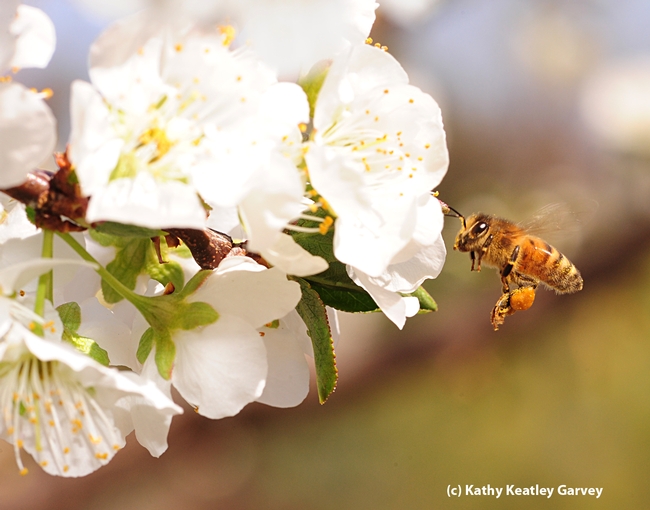
Pollen-packing honey bee heading toward plum blossoms. (Photo by Kathy Keatley Garvey)
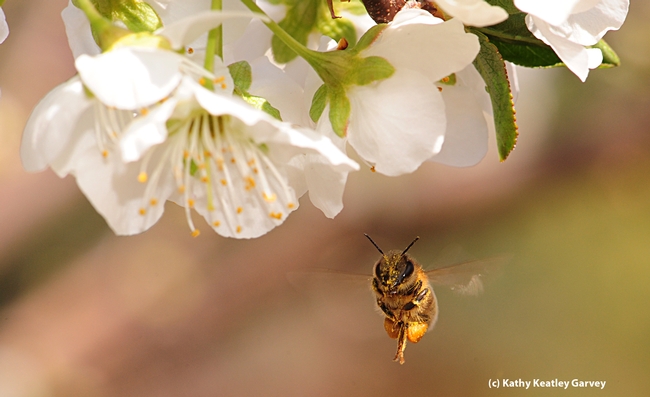
Honey bee adjusts her load. (Photo by Kathy Keatley Garvey)
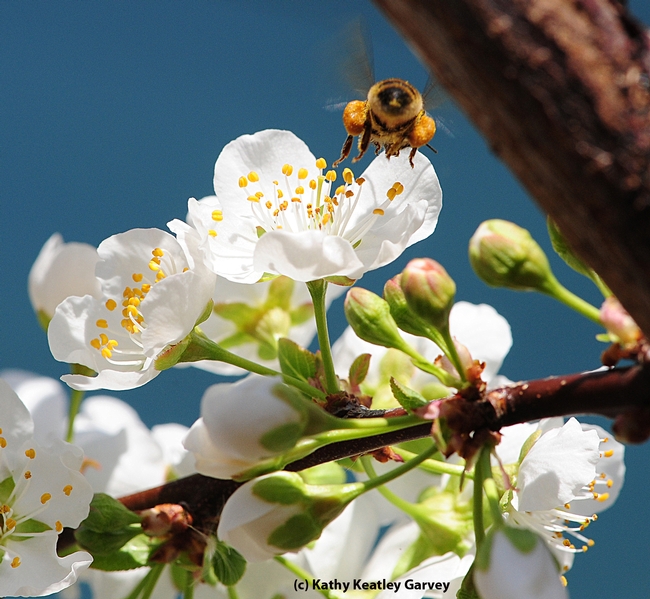
Honey bee loaded with pollen heading home. (Photo by Kathy Keatley Garvey)
Bee-utiful Blossoms
If you haven't made it over to the Häagen-Dazs Honey Bee Haven on Bee Biology Road, UC Davis, yet this year, you should. The trees that...
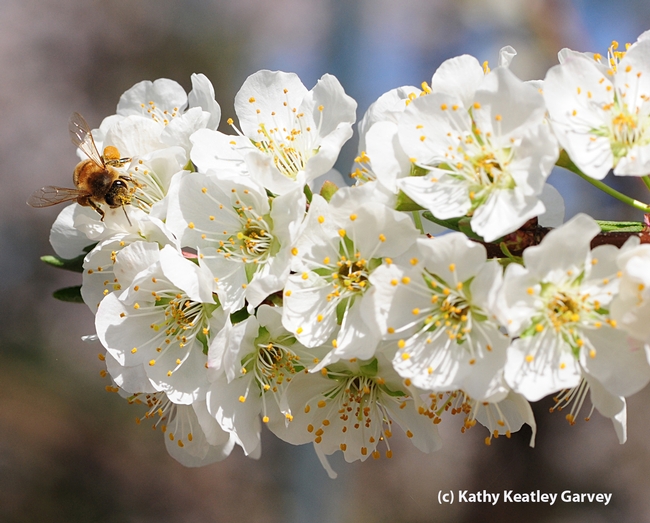
Honey bee foraging on plum blossoms. (Photo by Kathy Keatley Garvey)
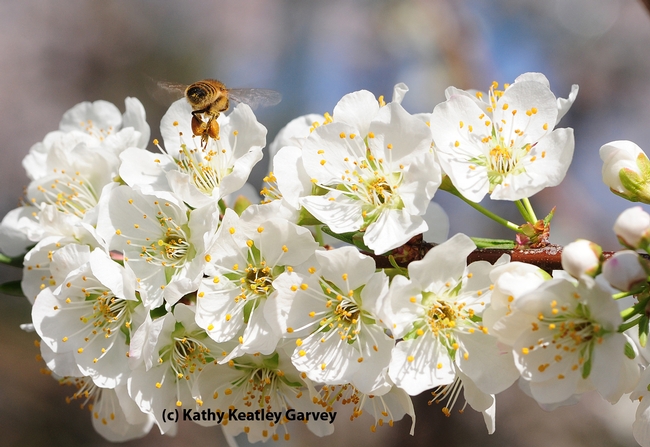
Pollen-packing honey bee heading home. (Photo by Kathy Keatley Garvey)
Where the Yellow Pollen Came From
"Where'd that yellow pollen come from?" Beekeepers who watch their bees return to their hives with pollen loads like to guess the origin of the...
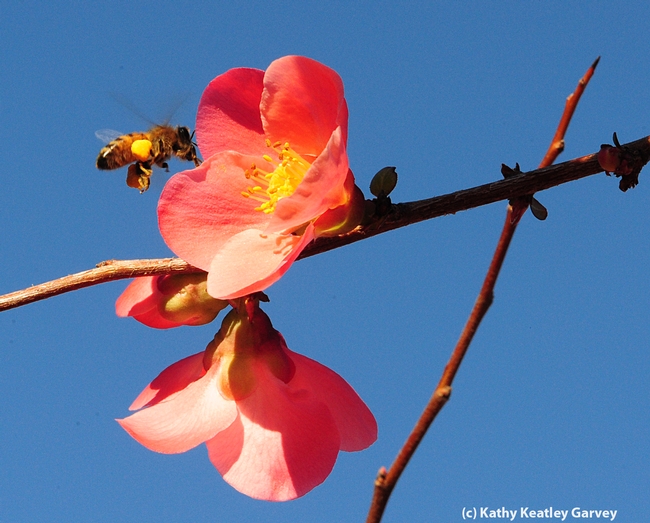
Pollen-packing honey bee cleaning her tongue as she heads for flowering quince. (Photo by Kathy Keatley Garvey)
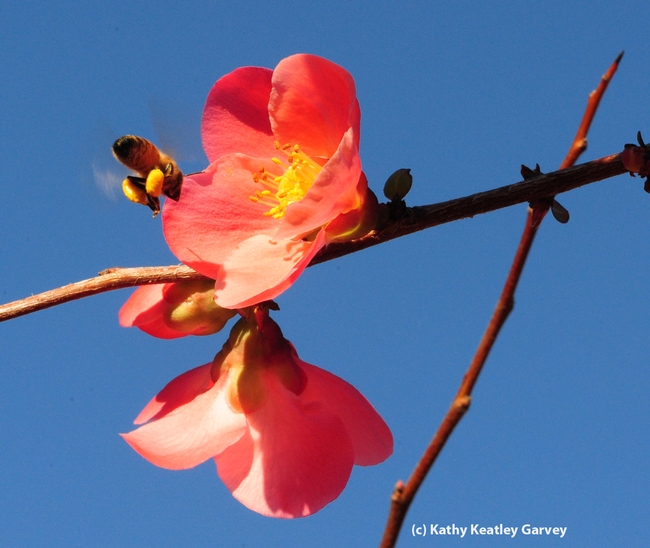
Honey bee adjusting her load. (Photo by Kathy Keatley Garvey)
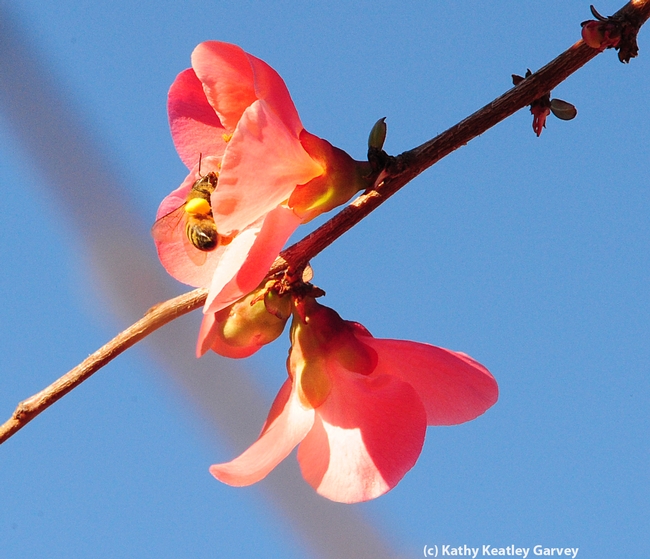
Honey bee gathering nectar and pollen. (Photo by Kathy Keatley Garvey)
Olive Tree: Beauty and Bane
Do you have an olive tree, Olea europaea, in your landscape? We do - a 'Kalamata' olive. It's a beautiful evergreen tree that, once established, requires very little water. The pollen can be highly allergenic. Ten years ago, we brought it home from the Vacaville Home and Garden Show. It was a spindly little stick, not more than ten inches tall from root ball to tip. We were excited at the prospect of harvesting our own olives and curing them with a method my husband read about that used only water and salt instead of lye. Let me say, LOTS of water and salt. We planted it in the back portion of our vegetable garden, about two feet from the fence line. No, I was not a master gardener ten years ago, or I would have known to plant it farther from the fence.
Over the years, it's grown to about 20+ feet tall. Since then, that vegetable garden has been relocated to accommodate a swimming pool, the size of which was dictated by the location of the olive tree. My husband and I are out there pruning the tree a few times a year to keep it from hanging over the neighbor's yard. In the spring, the yellow pollen from the tree coats the patio and chairs in a thick yellow dust. From now until January, I am constantly picking up dropped olives to alleviate staining of the concrete. And the olives we were going to cure? Haven't eaten a single one. On the upside, the tree provides a terrific area of shade to sit under, and lends a distinctively Mediterranean atmosphere to the backyard. It is a beautiful tree.
So what have I learned from this tree? Two feet between a tree and a fence is nowhere near enough. Curing olives takes time and patience. Even though olive trees grow well in Solano County, don't plant them near a pool!
Don't put a pool next to an olive tree.
Pollen Party
Makes sense that the sunflower bee (Svastra spp.) forages on the genus Cosmos. Cosmos (also the common name) is a member of the sunflower...

Sunflower bee (Svastra spp.) foraging on cosmos. (Photo by Kathy Keatley Garvey)

Close-up of pollen on a sunflower bee. (Photo by Kathy Keatley Garvey)

